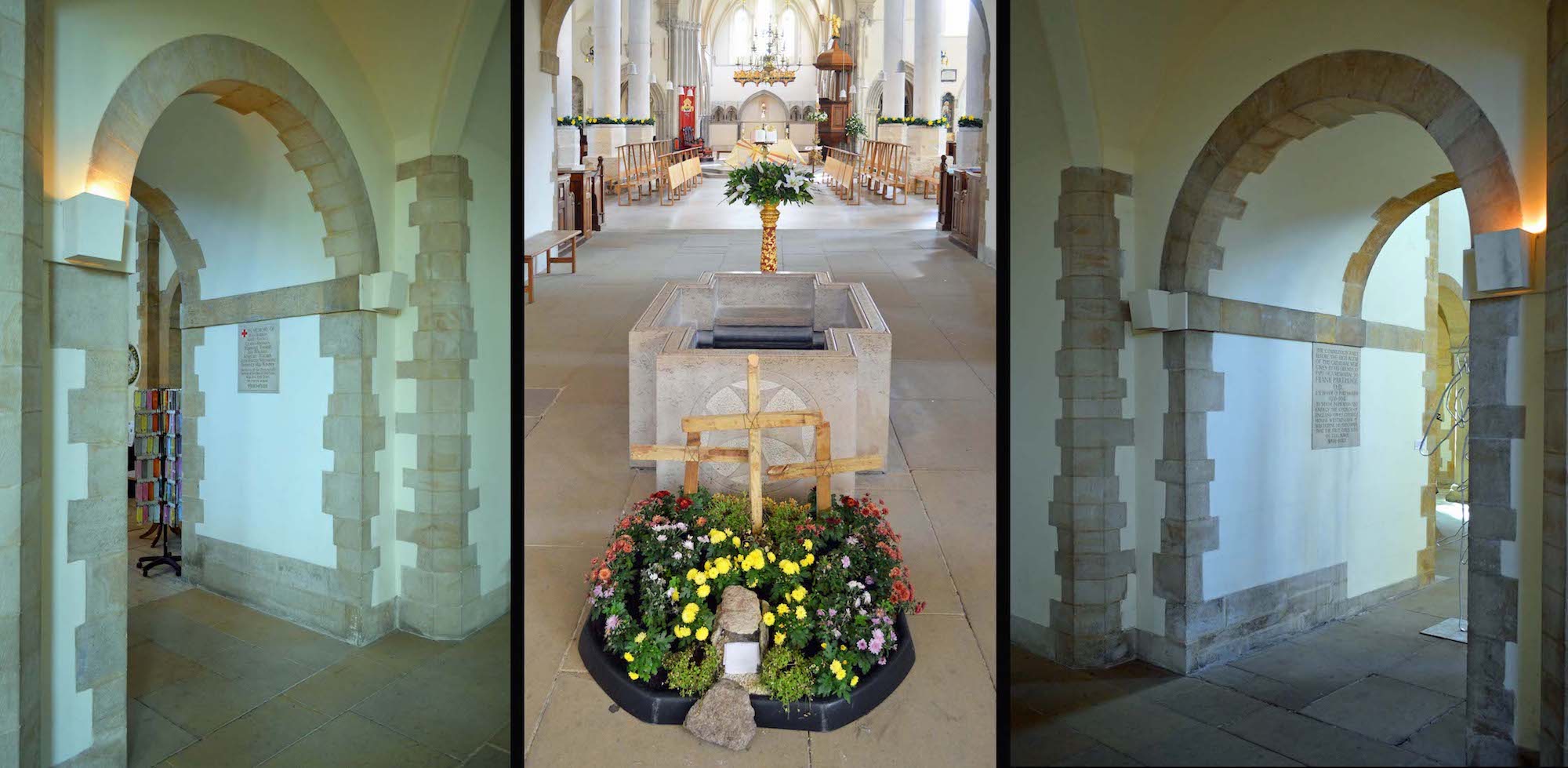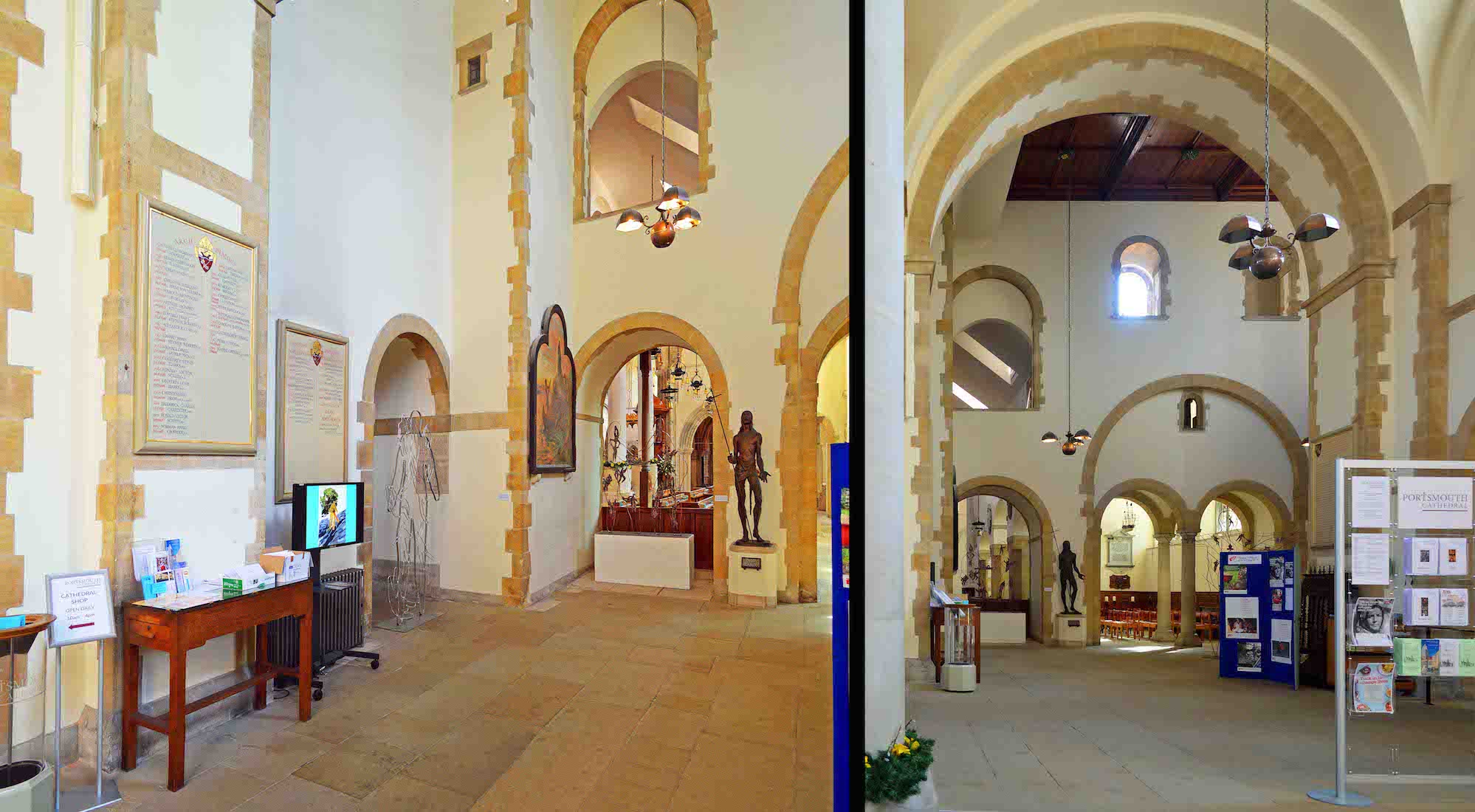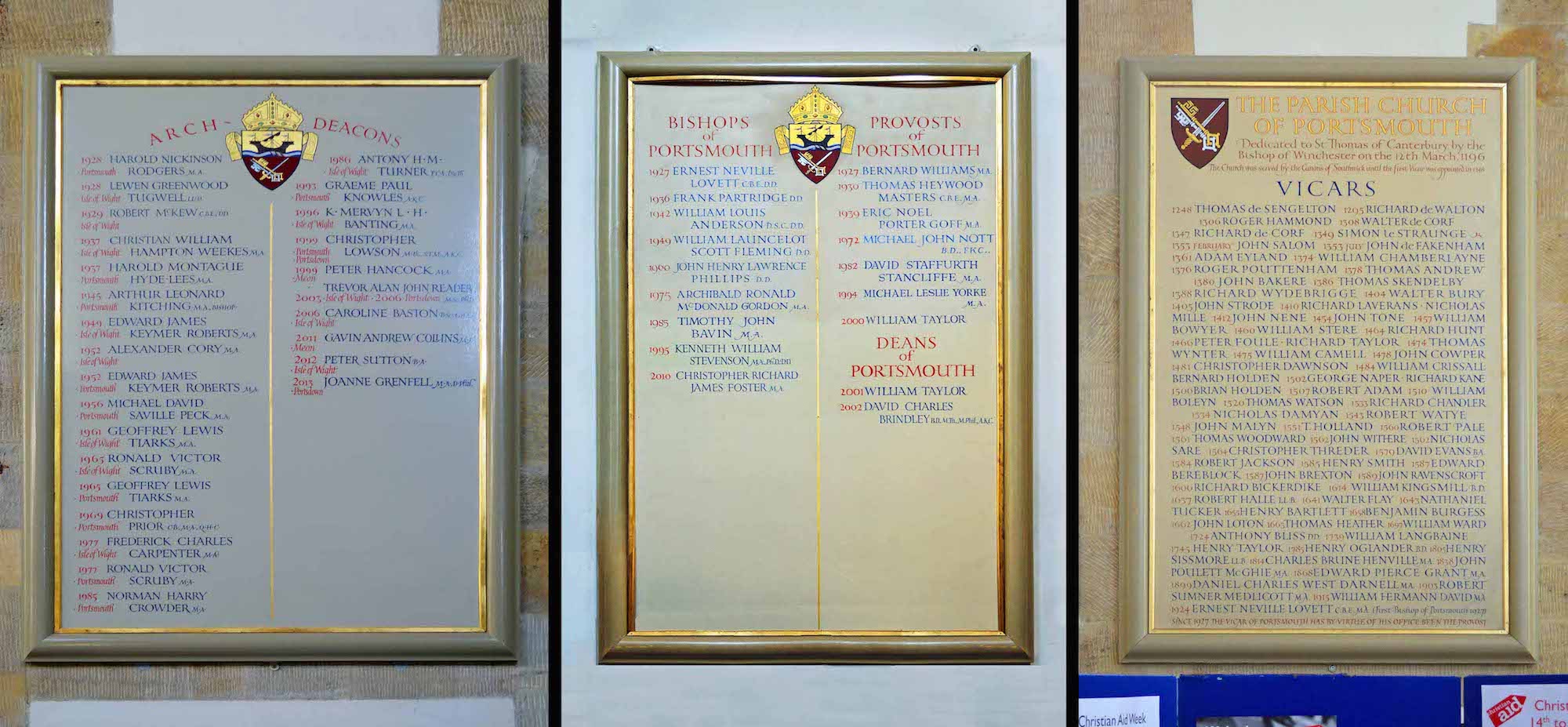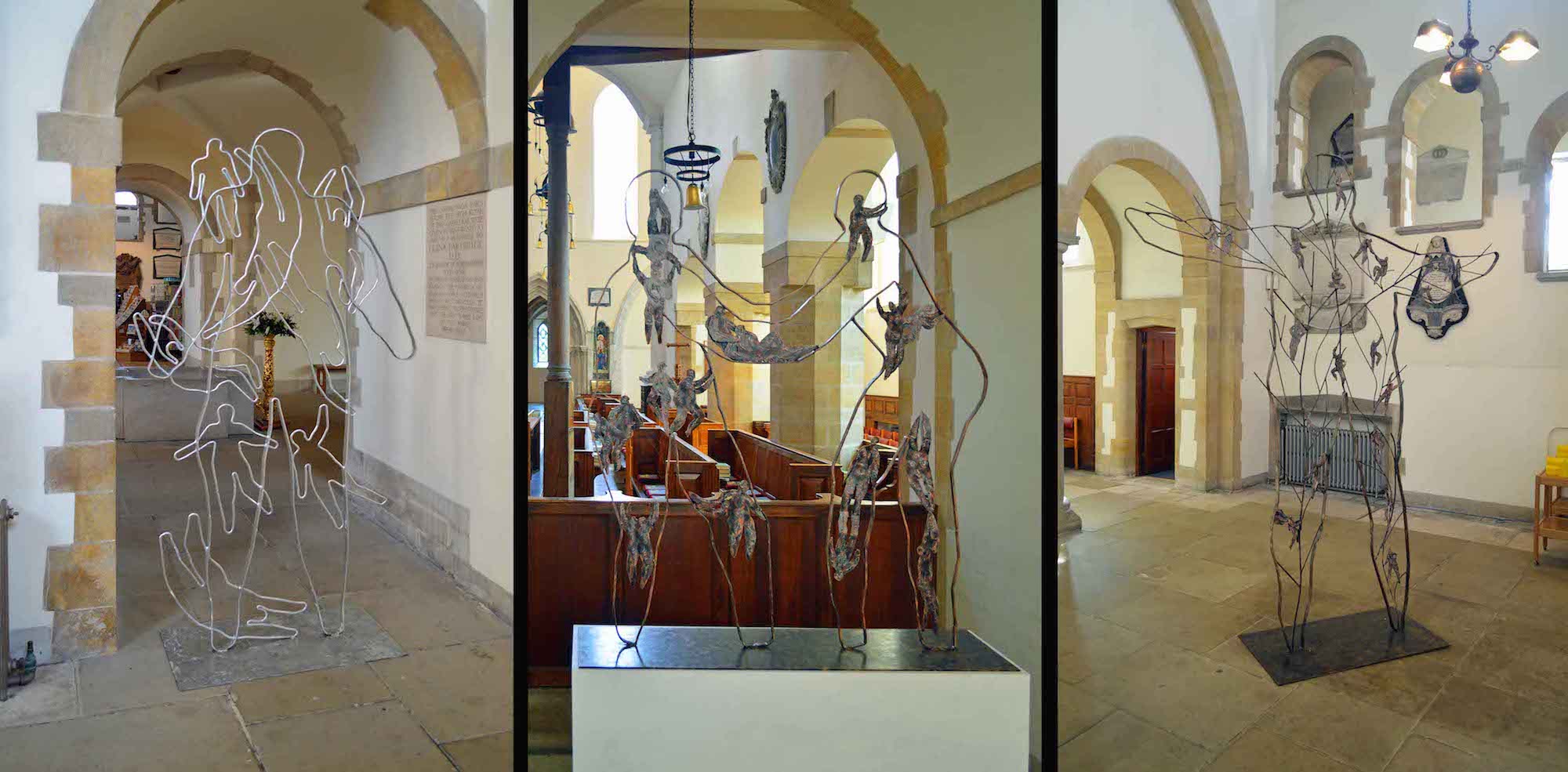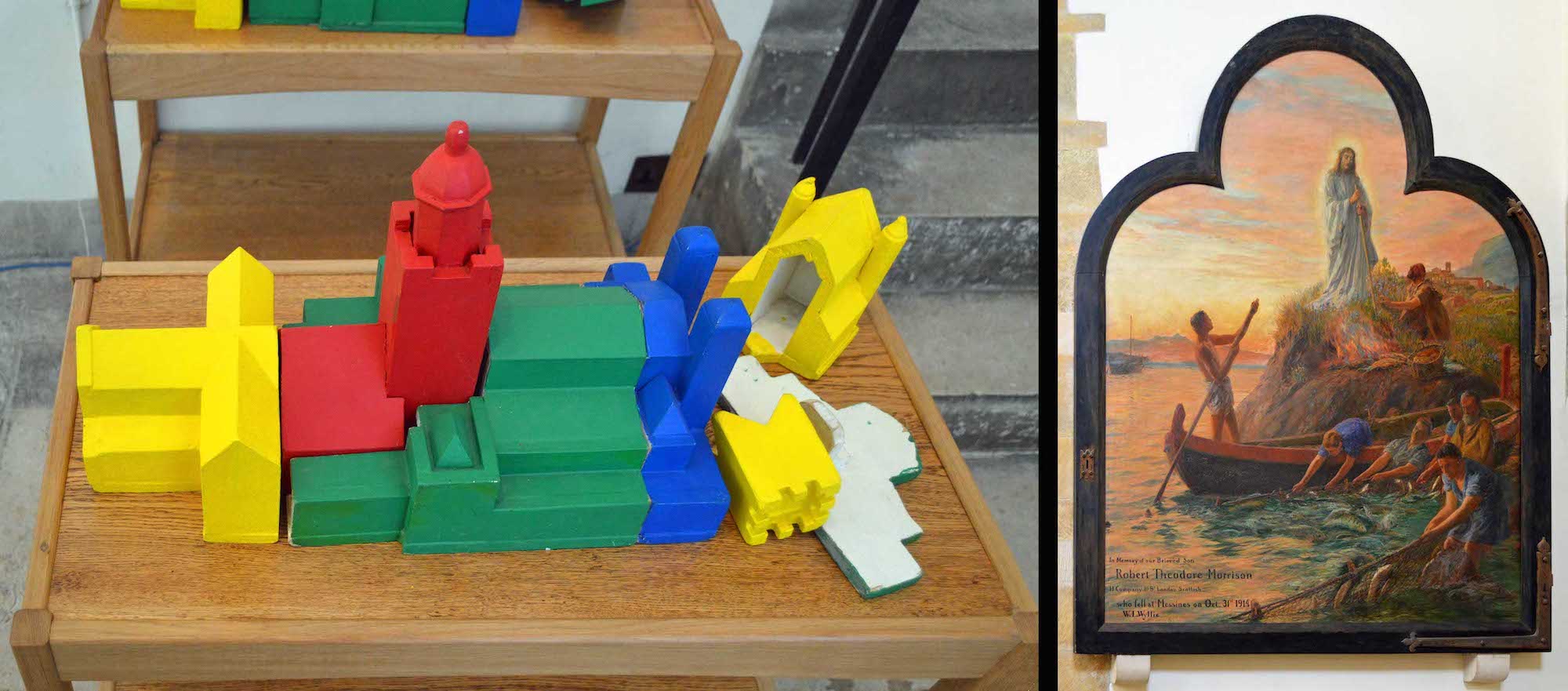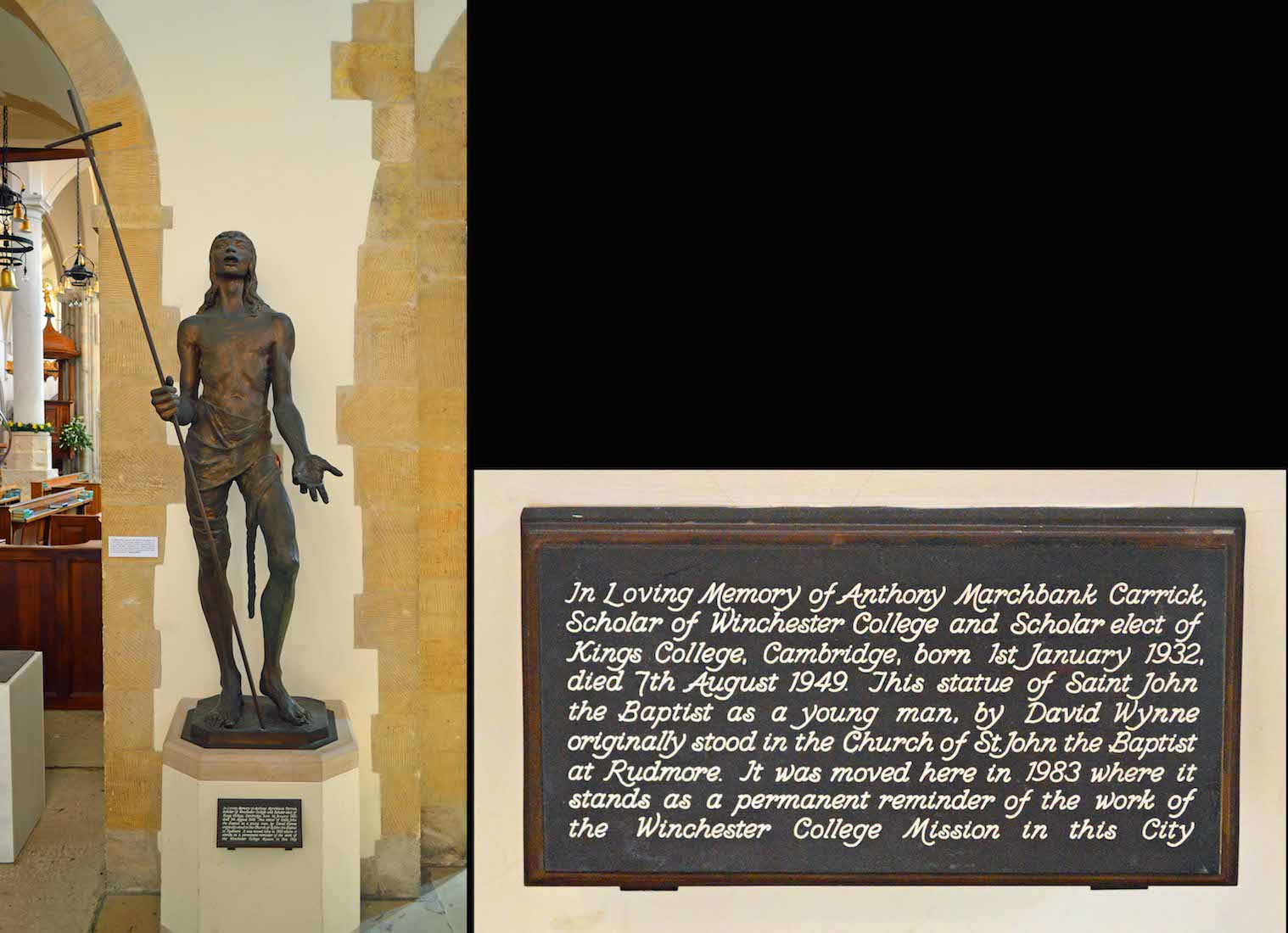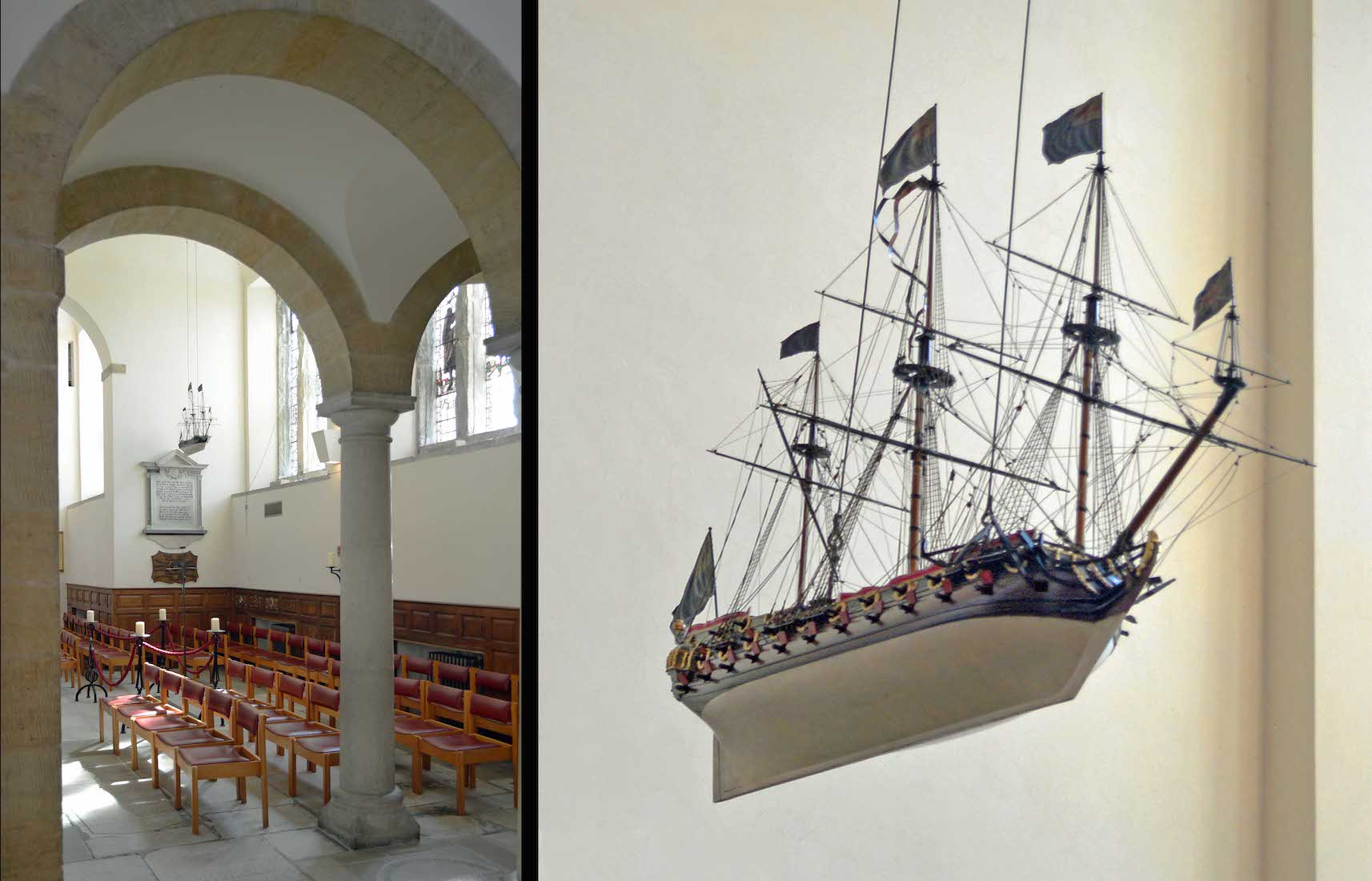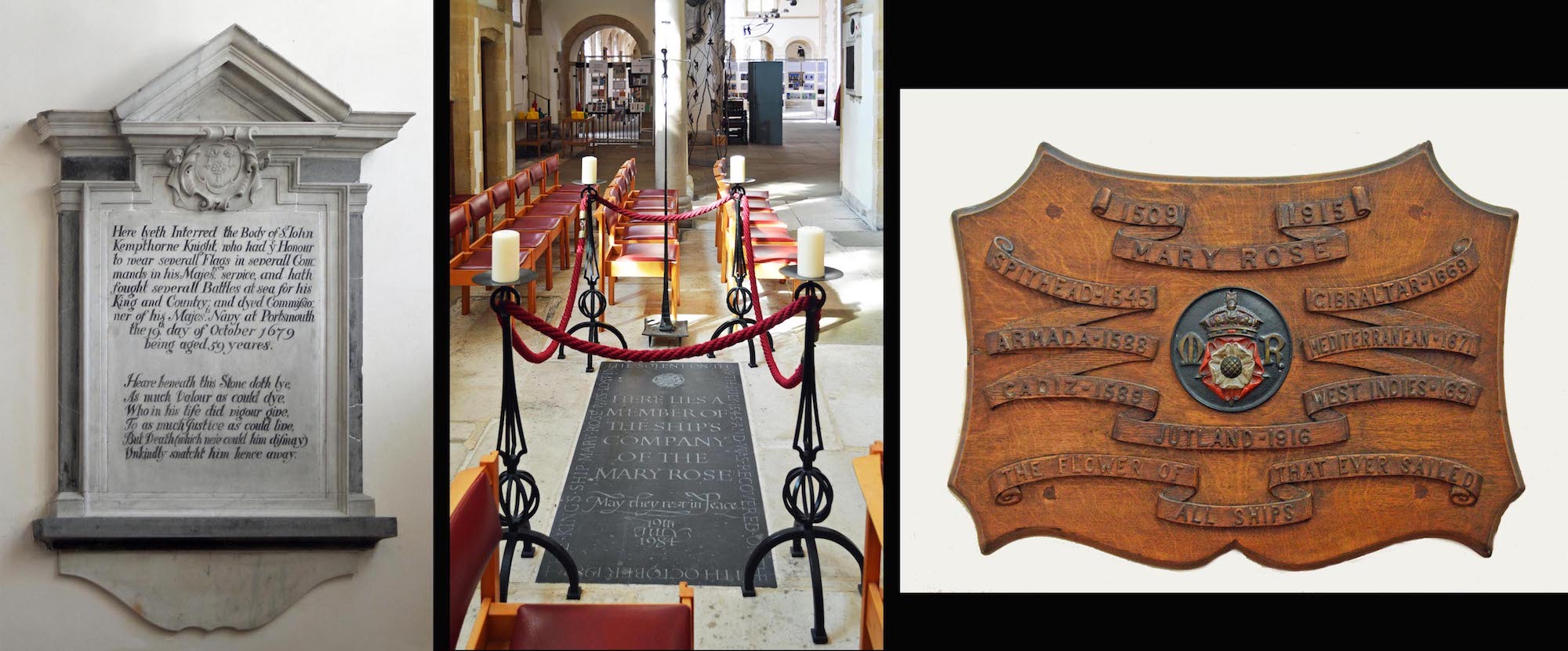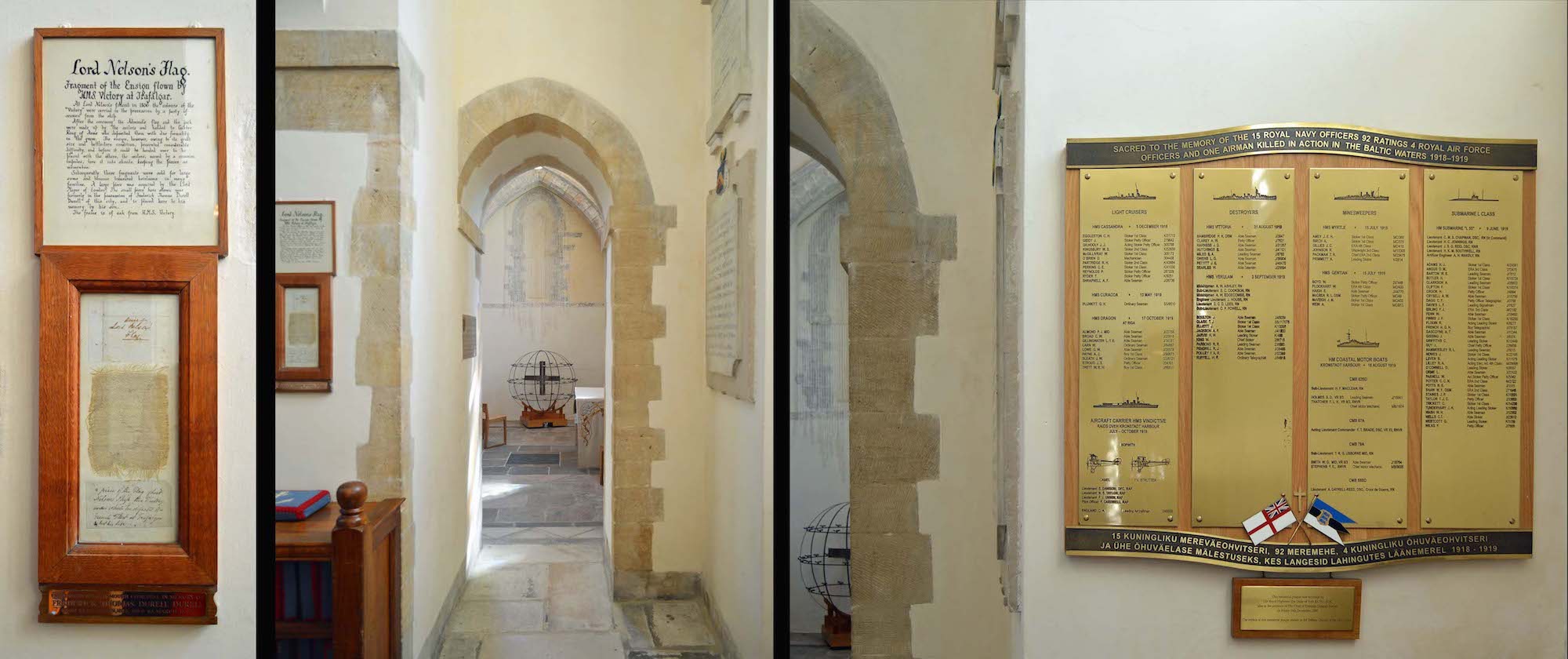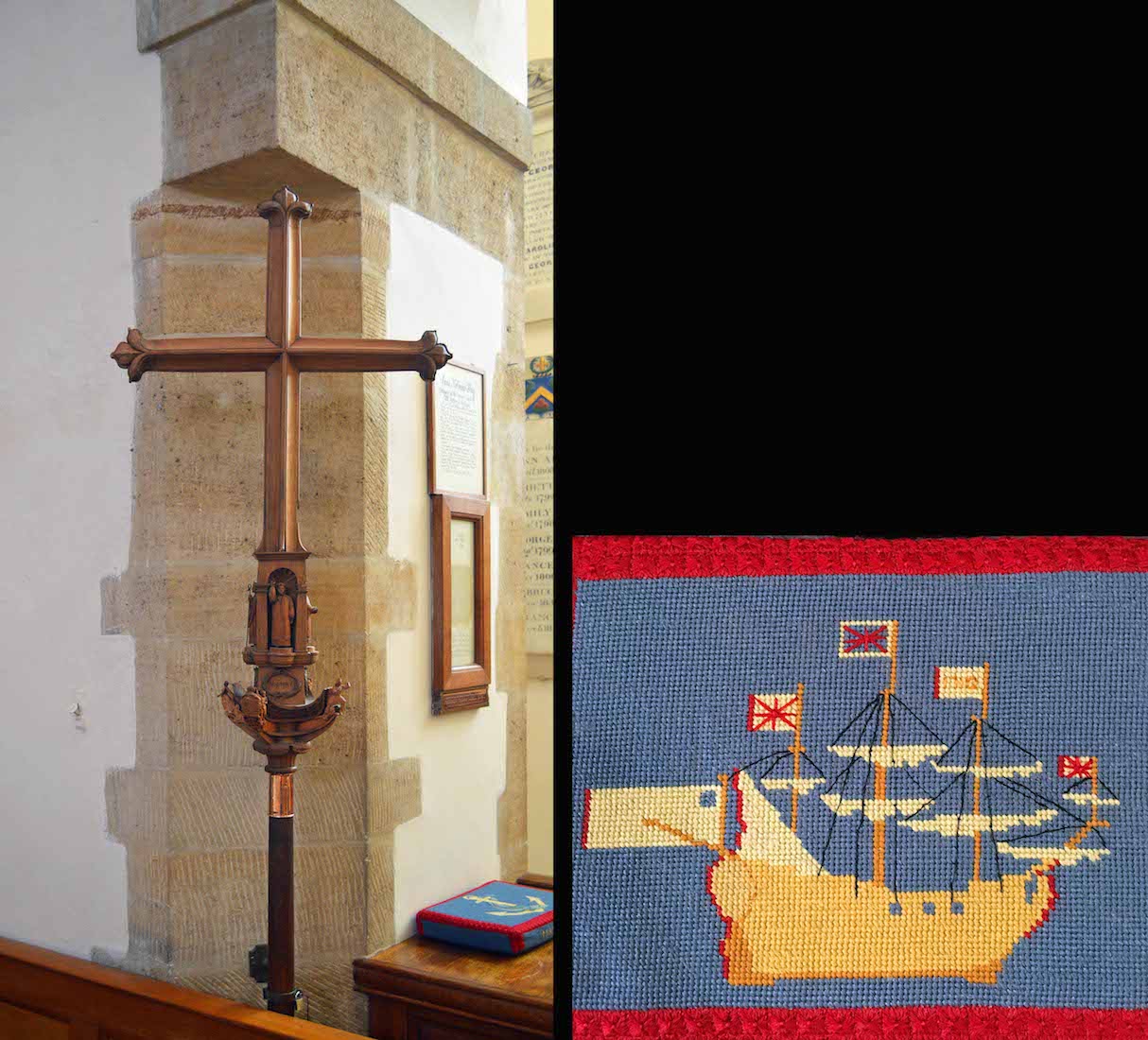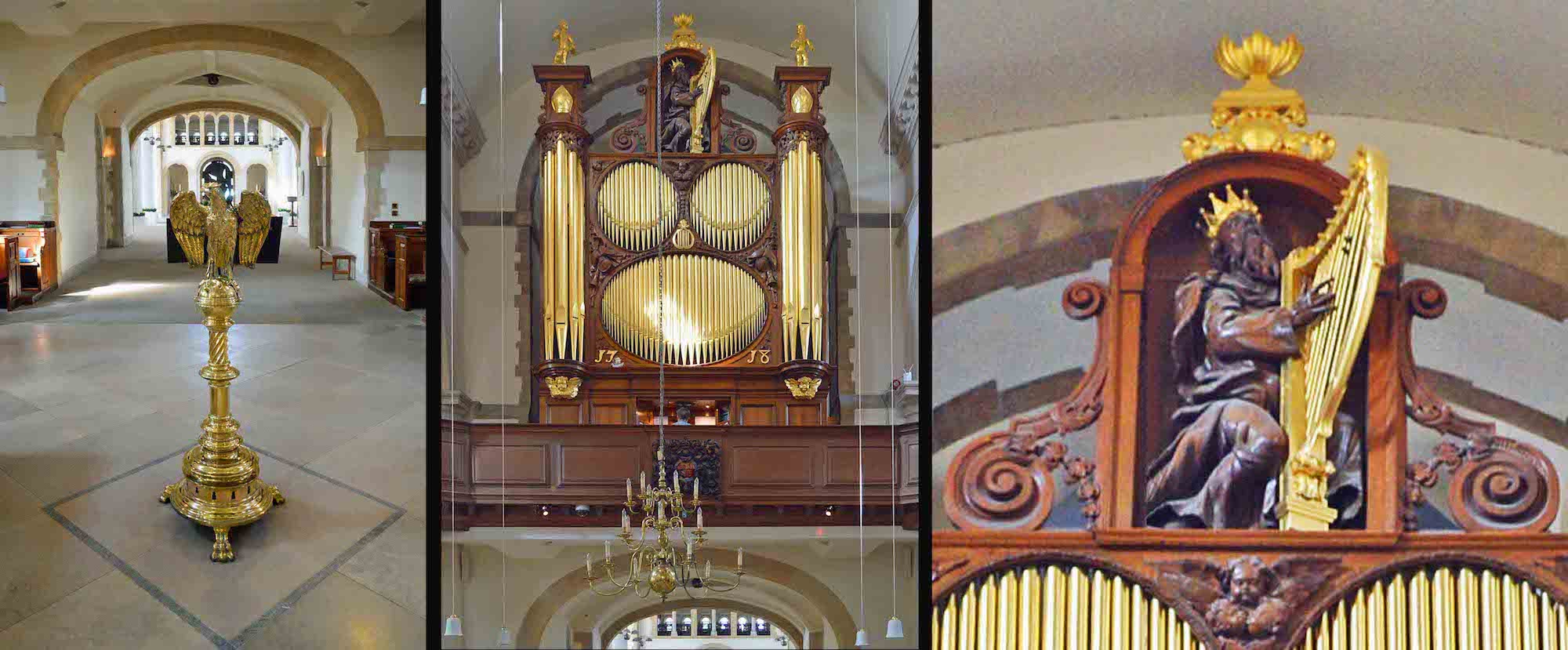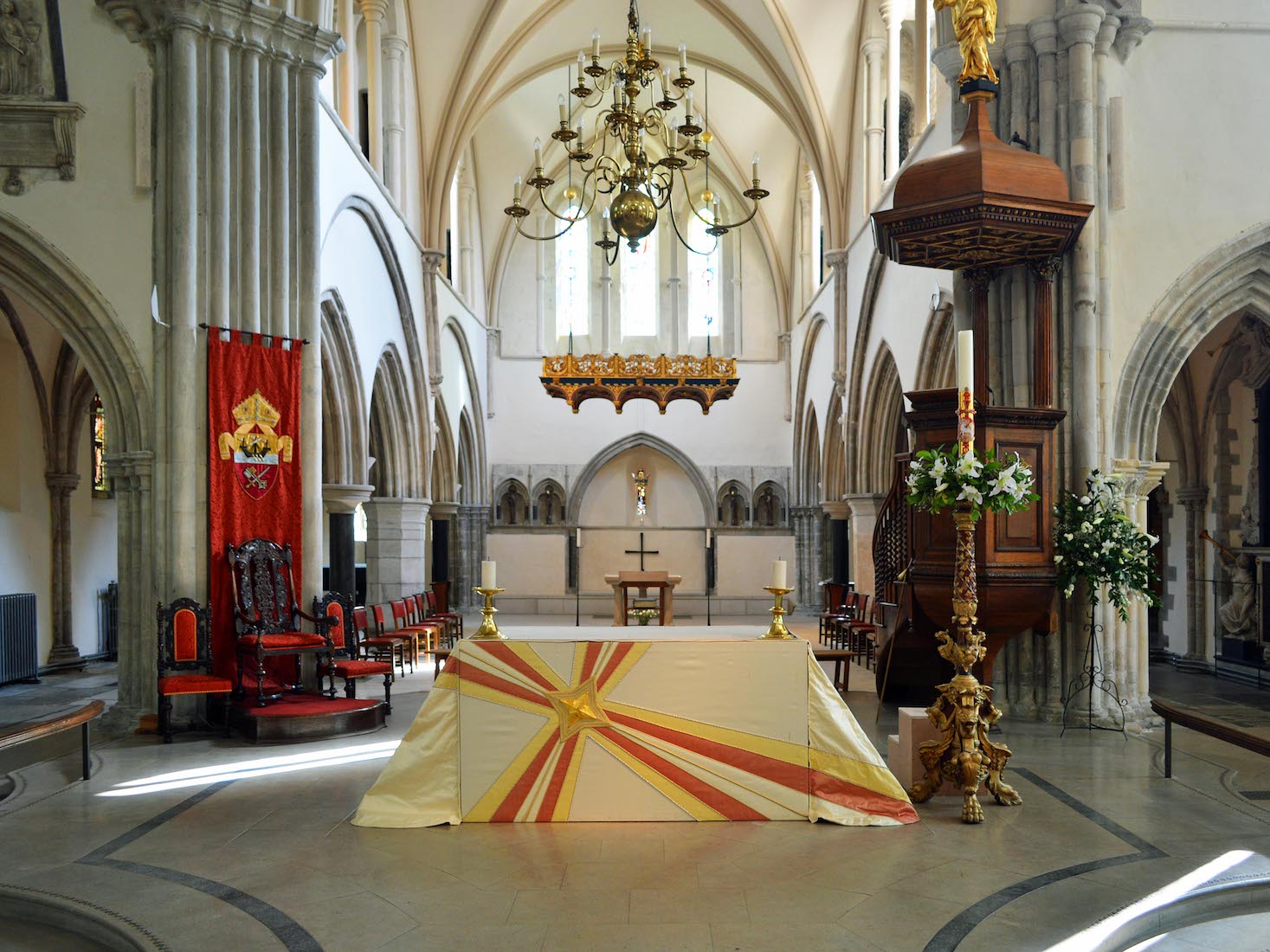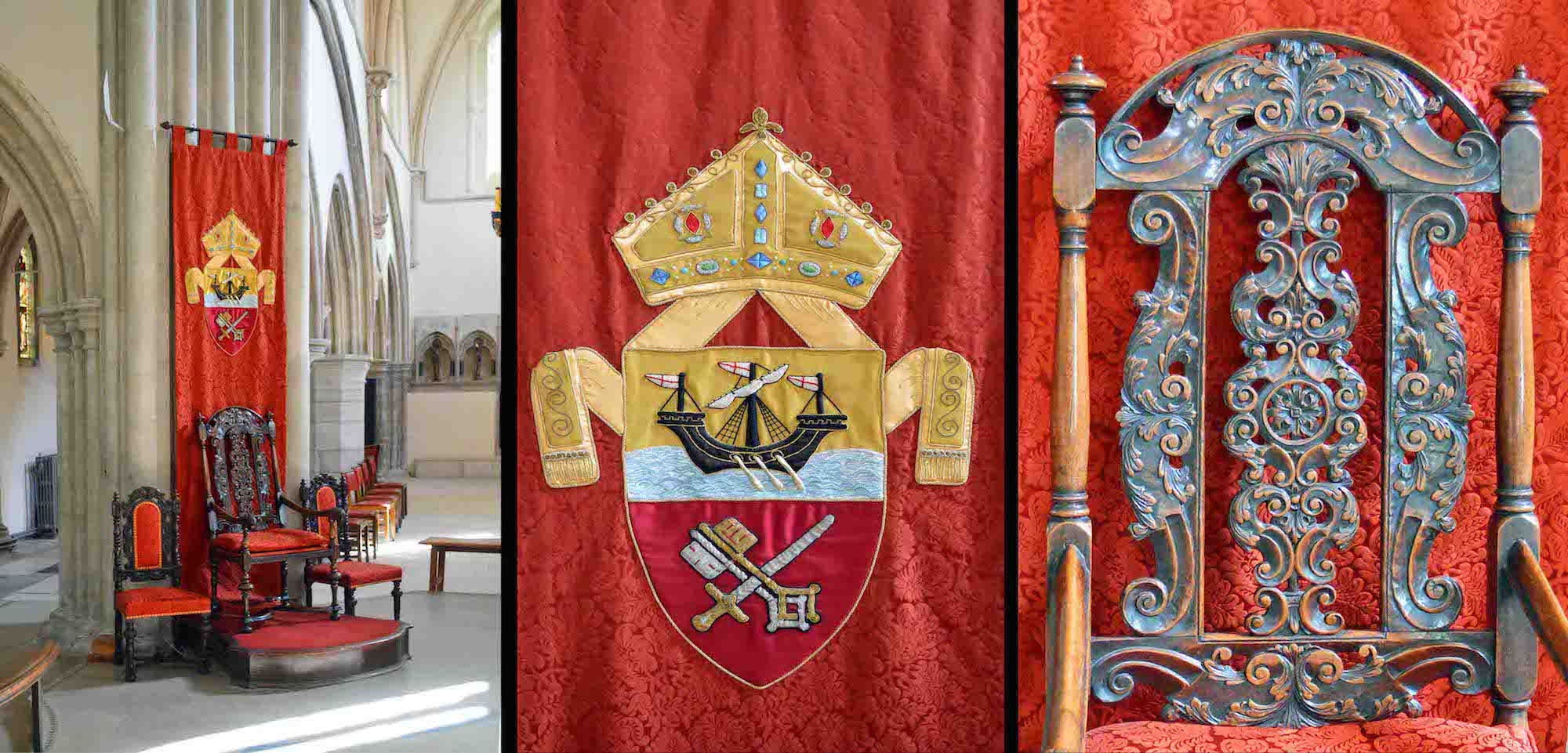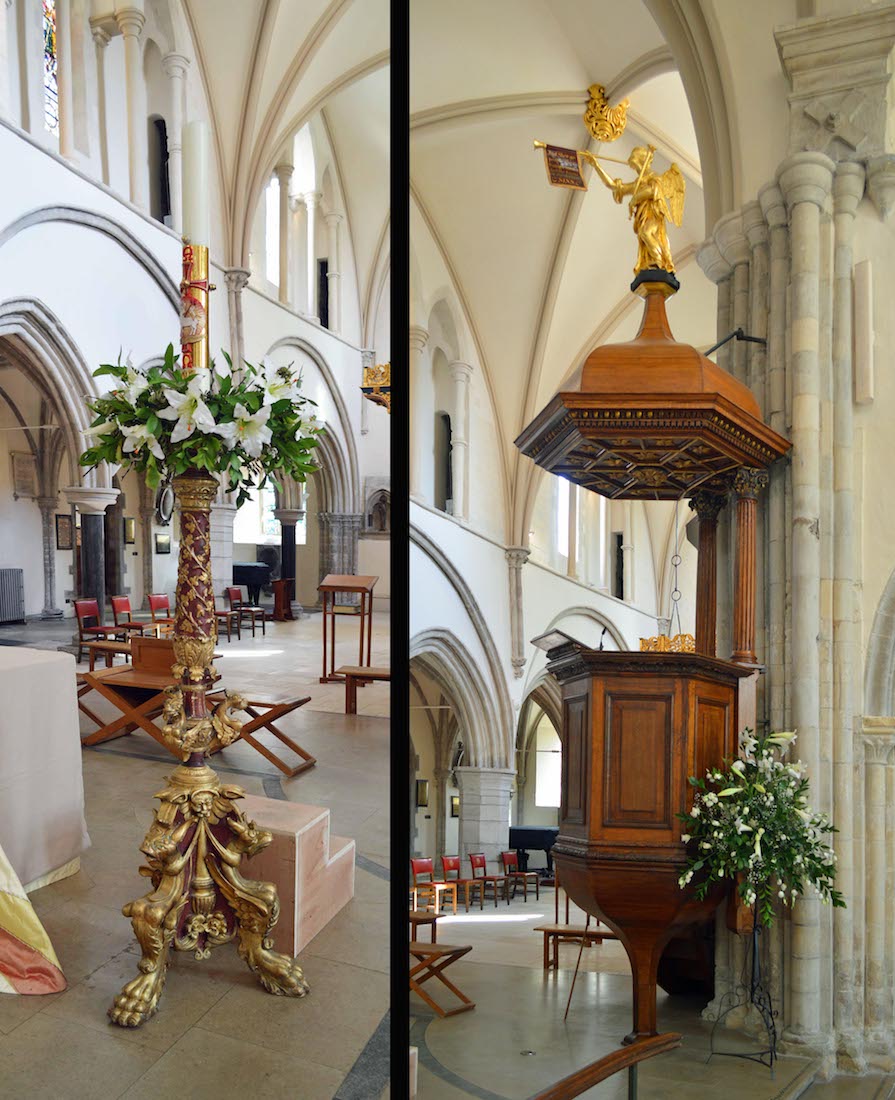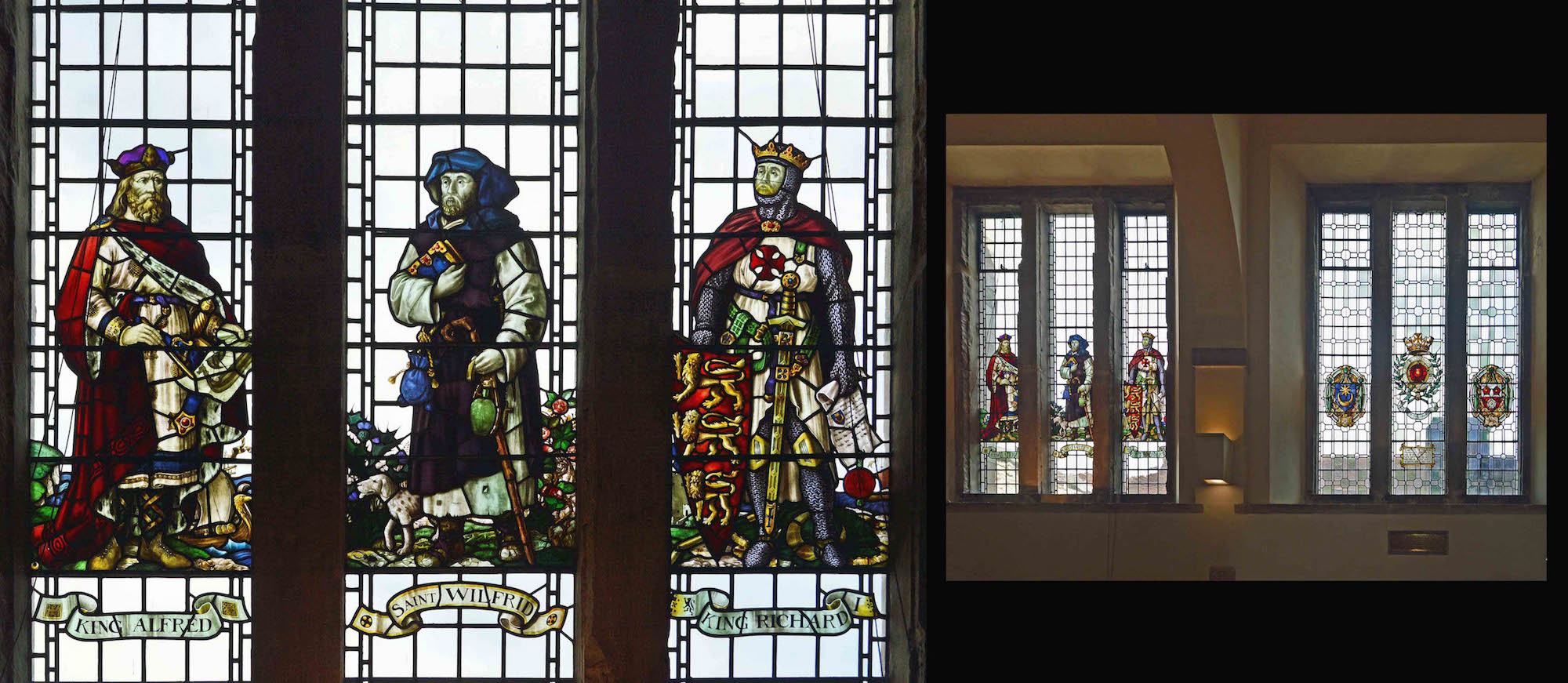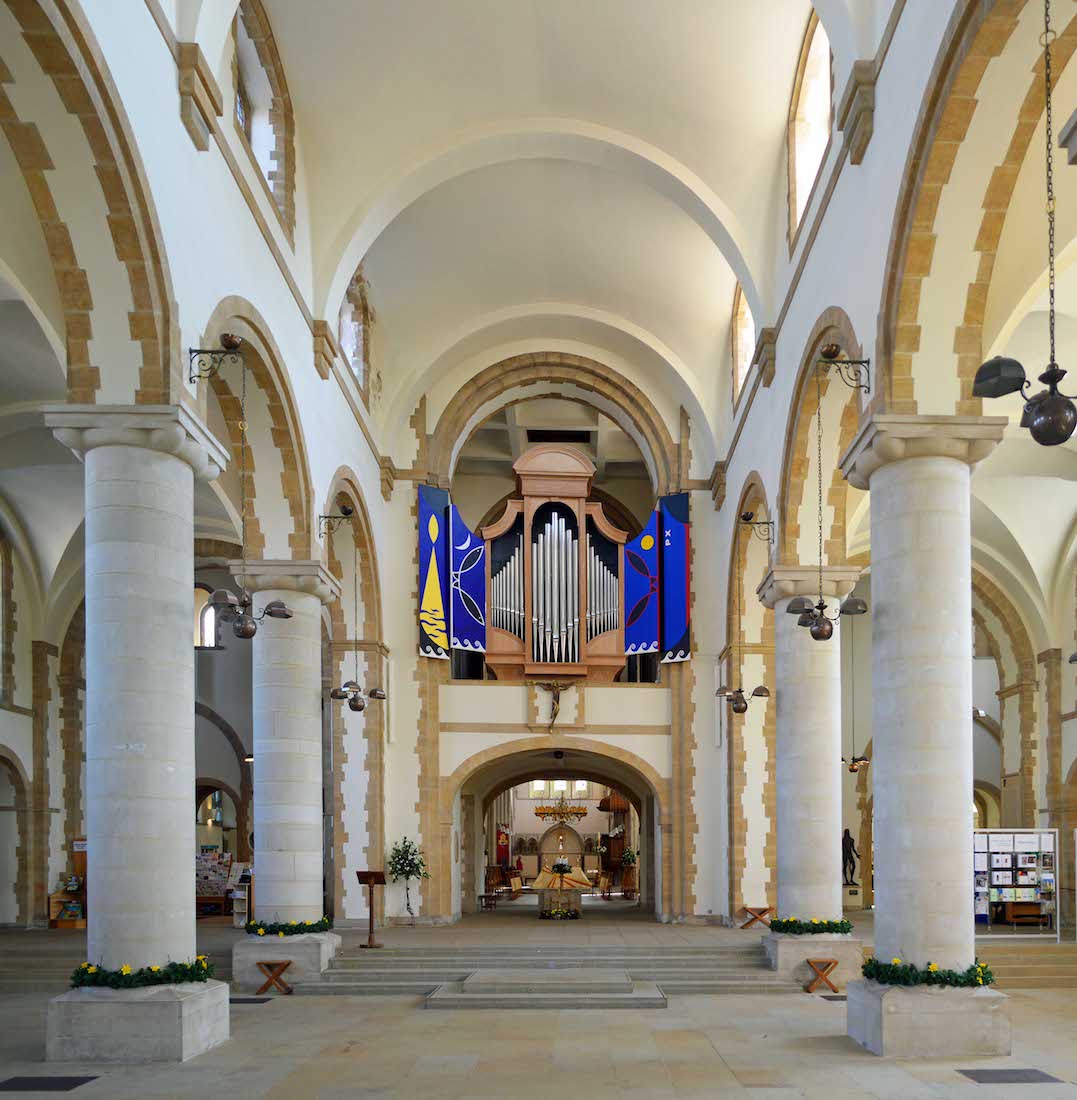
From the West doors, we see a set of organ pipes set above the central tower arch. The main organ console and pipe work face Eastwards, away from the nave. Work was carried out by Nicholson & Co. in 1996 for the installation of the pipes we see here, facing into the nave. The new pipework was installed behind a new case designed by Didier Grassin in 2001; the inside of the panels was designed by Patrick Caulfield. The left door depicts night – a stylised lighthouse shining on the sea. The right door depicts day, showing the sun and the hull of a fishing boat. PLAN
22. SHOP AND DELLA ROBBIA PLAQUE
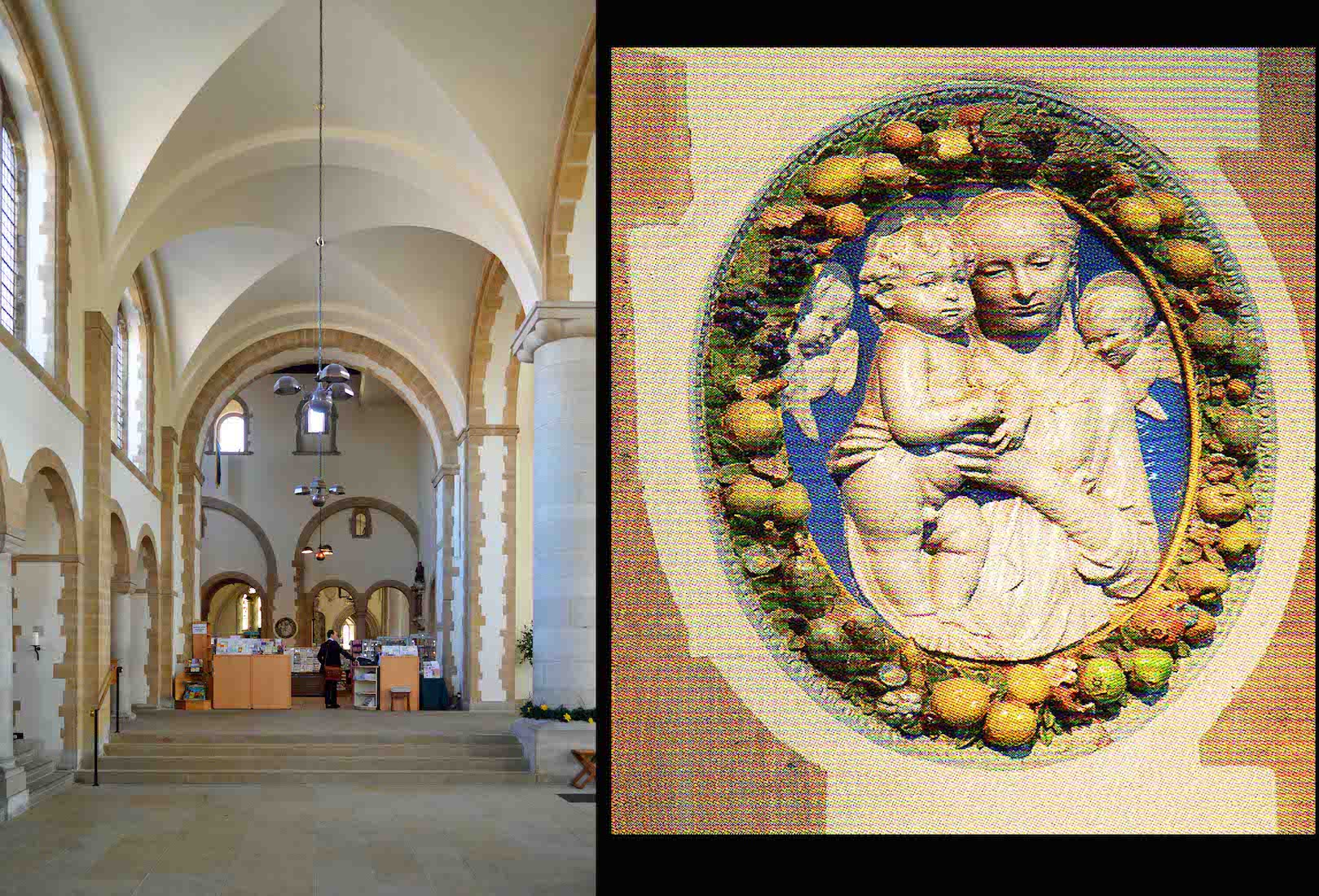
Looking Eastwards along the North wall of the nave we see the shop, and just visible, on a column, the Della Robbia plaque. Technically, the shop is located in the North transept. The ceramic plaque depicts the Virgin and Child by the Florentine sculptor Andrea della Robbia. Andrea della Robbia (1435 – 1525) was an Italian Renaissance sculptor, famous for his work in ceramics. [Cathedral Photo]
23. THE TOWER ARCH
Under the organ pipes is a wide arch leading through to the Quire. Immediately ahead is the baptistry, and a side passage branches off on either side. On the wall at left is an elliptical plaque remembering Neville Lovett, the first bishop of Portsmouth (1927 – 1936). And above the entry, beneath the nave organ case, is a sculpture of Christ called ‘Christus’ by Peter Eugene Ball.
24. BAPTISTRY AND SIDE PASSAGES
The baptistry is large enough for immersion, and has a small garden (a tomb garden?) in front of it. The passage to the left leads to the shop. The wall plaque remembers members of the Portsmouth Red Cross who lost their lives in 1940 to 1944. The passage to the right leads to the South transept, but is obstructed for the moment by a metal sculpture.
25. SOUTH TRANSEPT
We move across to the South transept. For future reference we notice three framed lists (two on the left and one opposite), three metal sculptures, including the one in the cross passage, a painting of a fishing scene, and a statue of a man holding a cross. After investigating these we shall move through to the Navy Aisle – the South Quire.
26. THREE CLERGY LISTS
Many cathedrals have interesting lists of clergy who have served there. Here we have lists of archdeacons, bishops and provosts and deans, and vicars. The vicars list is particularly interesting, dating back to 1248. The other ists are more recent, dating from the church’s 1927 cathedral status.
27. METAL SCULPTURES
In this area of the Cathedral stand three metal sculptures by Rafael Klein. Klein writes: ‘Family Tree is a series of sculptures and graphic works which has occupied me for several years. It began as a reaction to a time when divisions between people seem to be relentlessly emphasised.’
28. MODEL AND PAINTING
Many cathedrals have a model on display – often far more elaborate than this one! Yet this model with its different colours shows graphically the different stages in the building of the Cathedral. This model is in the South transept, close to the South wall. The painting is ‘The Miraculous Draught of Fishes’ by William Lionel Wyllie. It shows Jesus on the ‘beach’ with the disciples hauling in a large catch of fish – the scene described in John 21:1–14..
29. JOHN THE BAPTIST
Also in the South transept is this bronze statue of St John the Baptist by David Wynne. It was cast in 1951 as a memorial to a Winchester College pupil who died climbing the Matterhorn. It shows John as a young man.
30. THE ‘MARY ROSE’
We investigate the Navy Aisle. The ship Mary Rose V was built in 1654 as a 40-gun fourth rate by Munday’s in Woodbridge. Originally launched and named the Maidstone, she was renamed Mary Rose in 1660 after the Restoration. The Mary Rose V was 556 tons, 100 feet (30.5m) in length, with a beam of 31 feet 8 inches (9.7m) and a draught of 13 feet (4m). By 1677, her armament had been increased to 48 guns which served her during the Anglo-Dutch Wars and the War of the Grand Alliance.
31. KEMPTHORNE MEMORIAL, MARY ROSE MEMORIALS
In 1669 the Mary Rose fought her most famous battle. While sailing near Cadiz, Spain, under the command of Sir John Kempthorne, she was suddenly attacked by seven Algerine corsairs. There followed a battle that lasted all that day and into the next. The Mary Rose suffered severe damage, but disabled the enemy admiral’s vessel and forced the entire force to withdraw after sinking two ships, burning two others, and capturing one other ship. There were many more Mary Rose ships to follow, all remembered here.
32. PASSAGE THROUGH TO THE RECONCILIATION CHAPEL
This passageway leads us through to the Reconciliation Chapel alongside the sanctuary. We shall visit here later, but for now we notice the items on either side of the doorway. At left is a fragment of Lord Nelson’s flag – the flag flown by HMS Vistory at Trafalgar. At right is a memorial to officers and ratings killed in action in Baltic Waters in 1918–1919. Interestingly, the inscription is translated into German at the bottom of the memorial.
34. PROCESSIONAL CROSS
Looking round to the right even further we see the processional cross. (Nelson’s flag is in the background.) The cross is particularly interesting for the carving at its base. With the word ‘Victory’ is an appropriately carved shipping theme. Above there are four carved figures. Normally one might guess the Four Evangelists, but one of these appears to be a bishop.
35. SOUTH QUIRE WINDOWS
These windows in the Nave Aisle give light to the Mary Rose area. The three windows, from left, remember • William Norton (in fact, Noxton), Thomas Carpenter and John White (the Reformation WIndow); • Boys of the Portsmouth Grammar School who fell in the Boer War 1899–1902; • Thomas Hether, Admiral Lord Dartmouth and Thomas Ken (The First Rebuilding of the Nave).
36. CATHEDRAL ORGAN
From this side we see the Cathedral organ in all its glory. The 1861 John Nicholson organ was originally built for Manchester Cathedral. In 1994 the structure, soundboards, action and wind system were replaced, and a new console was positioned within the 1718 (note the date) Jordan case. The casework, which was in a poor state of repair, was restored by Nicholson craftsmen. The missing lower panelling was completed in solid English oak and the pipes and figures re-gilded in 24 carat English gold leaf. We notice King David making his contribution.
37. ALTAR
Looking East from the Quire, the altar is flanked by the Paschal candle. The cathedra is at left, the pulpit at right, and beyond the altar is St Thomas’s Chapel. It is almost universal these days for a cathedral to have a ‘nave altar’ which is close to the congregation, and so that the celebrant can face the congregation during the adminstering of the Eucharist. The altar stands on a podium of Purbeck stone, with mosaic work by Richard Noviss.
38. CATHEDRA
Each cathedral is ‘the seat’ of the bishop of the local diocese, and this is demonstrated by the presence of a special chair or throne. The word for this in Latin is ‘cathedra’ and it is from here that the term ‘cathedral’ comes. In the coat of arms of the diocese, the boat obviously refers to the Cathedral’s maritime history. The keys and sword are traditionally an allusion to Saints Peter and Paul, and are here taken from the arms of the mother Diocese of Winchester.
39. PASCHAL CANDLE AND PULPIT
The Paschal candle relates to the Old Testament passover, and to Jesus being ‘the Light of the world’. The pulpit was installed in 1693 and is all that remains of a three-decker pulpit. The panels of the ceiling of the sounding board over the pulpit and the gilded stars thereon are of timber from HMS Tremendous, Queen Charlotte Actaeon and Chesapeake, and the central rose is from the Victory. The text of the banner of the angel trumpeter is from Isaiah 58:1 : ‘... lift up your voice like a trumpet, and show my people their transgression, and the house of Jacob their sins.’
40. NORTH QUIRE WINDOW I
Along the North side of the Quire there are three sets of three light windows. The Westernmost window of the set shows the Founders in Church, State and Borough. We see King Alfred, St. Wilfrid and King Richard I, each in their different ways having laid the foundations of Portsmouth. King Alfred is seen as the founder of the Navy. St. Wilfrid was a missionary who brought Christianity to much of the south coast. King Richard I gave Portsmouth its first charter in 1194, having embarked from Portsmouth with his army to Normandy.



